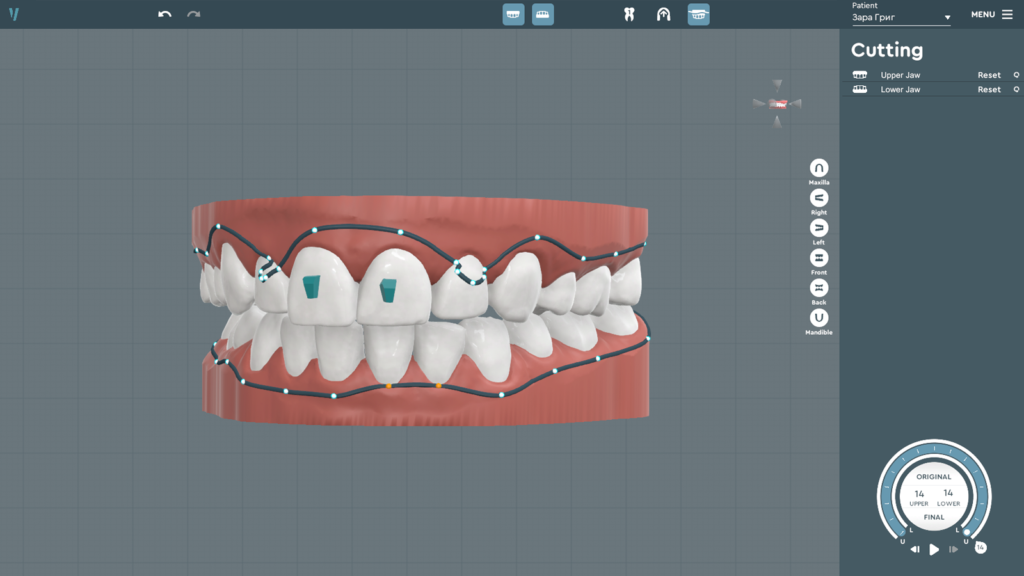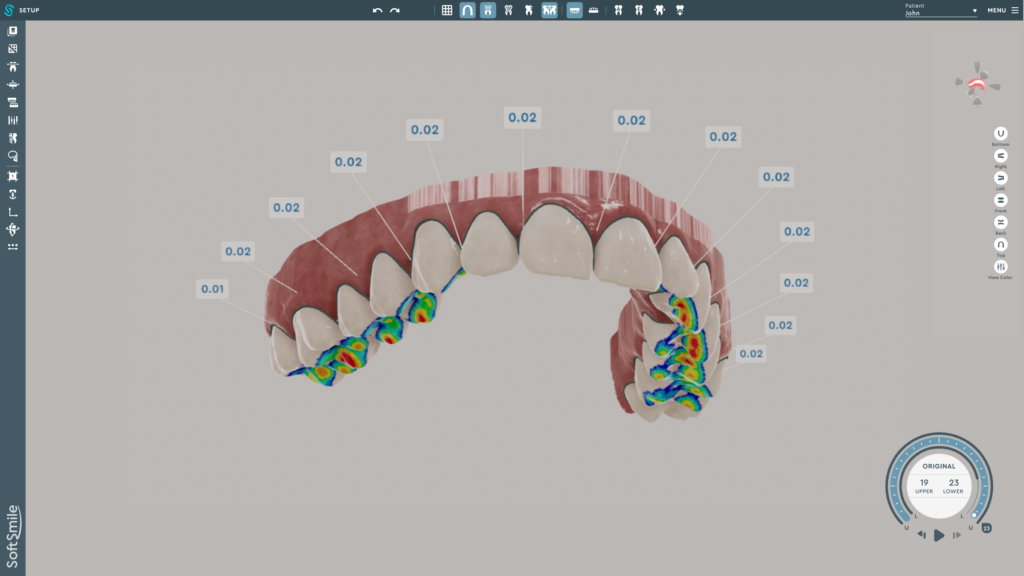The Disruptive Power of AI in Orthodontics: How SoftSmile is Transforming the Industry and Making Perfect Smiles Accessible to All

The advent of AI is changing the trajectory of nearly every industry on the planet. Orthodontics are no exception. SoftSmile, a technology company focused on delivering best in class software to the dental industry, is flipping the narrative and transforming the orthodontic industry as we know it.
SoftSmile has made it its mission to change how people attain beautiful smiles with its AI-driven software, VISION, which is paving the way to make clear aligners more accessible and affordable for everyone.
VISION’s advanced biomechanical-influenced AI is fundamentally changing aligner planning and fabrication by significantly reducing time spent on development. At the same time, it is cutting costs by giving orthodontists more control. SoftSmile is shaking up the orthodontic space, innovating in an industry that is stagnant.
Taking On Industry Goliaths That Fail to Keep Innovating
The last time there was a major innovation in the orthodontic industry was in the late 1990s, when clear aligners first hit the market. Traditionally, when an orthodontist creates a care plan for a patient, the only solution has been to send dental impressions away to a provider for treatment planning and manufacturing. Those companies can charge as much as they want because they have a monopoly on the market. That means that doctors pass on artificially inflated prices to their patients.
But what if doctors could generate their own treatment plans in-house? What if they could not only create their own treatment plans, but they could also print the aligners in-house, keeping 100% of production under one roof?
The result is that doctors wouldn’t have to pay other providers exorbitant amounts of money, they would have autonomy over the process that allows them to cut down on time and expenses, and in doing so, could dramatically lower the price of aligners for patients from thousands of dollars to a mere hundreds of dollars, an order of magnitude lower.
SoftSmile and its VISION software fills the gap in the marketplace and allows orthodontists to administer both aligner planning and production how they want to – whether they want to print in-house or outsource to a trusted provider.
So what makes VISION able to empower doctors with more control and cut down on time and costs? Biomechanical-influenced AI. In simple terms, the algorithms in the software act like a GPS for the mouth. Just as your GPS guides you to your destination, providing you with the best route possible, avoiding slowdowns, road work or accidents, VISION helps orthodontists find the best possible path to guide teeth to perfect alignment for exceptional smiles.

And just like a GPS eliminates the tedious task of using a paper map to guide the way, the AI embedded in VISION is designed to make sure people spend less time tackling manual tasks, removing tedium at every step. VISION helps orthodontists complete treatment planning in 95% less time than other solutions, all thanks to the more than 20+ patented algorithms.
The Tech Behind the AI-Driven Software That Changes How Orthodontists Treat Patients
AI powers the speed and precision of the VISION software. The algorithms in VISION are unlike any other solution in the orthodontic industry and are crucial to each step of preparing the clear aligner design for manufacturing. Machine learning is a key component of VISION, and it learns on both a local and cumulative level. Ultimately, VISION makes the aligner design process faster, easier, and above all, extremely accurate, which improves patient outcomes.
AI helps to automate several of the crucial steps in aligner creation. This allows orthodontists to cut down the time from planning to treatment and allows doctors to dictate how and where aligners are produced. Here is how VISION’s AI works to automate aligner development:
1. Preprocessing
Patients’ mouths are either scanned with a clay mold or a camera, but both approaches can be inefficient and can result in missing information. This includes missing data in between teeth and excess saliva can interfere with the accuracy of the scan. Most software relies on manual input to fix these two common issues. Instead, VISION utilizes AI to automatically polish errors and fill in missing data, nearly eliminating the need for manual tweaks with only minor input needed.
The algorithms decipher mouth geometry and extrapolate a true representation of the patient’s mouth, taking into account the gums and teeth surfaces. Because of VISION’s preciseness, it helps to avoid common human mistakes that mean the difference between a beautiful smile or a treatment plan that doesn’t work.
2. Segmentation
One of the most impactful contributions of VISION’s AI is that it simplifies the segmentation of teeth, crowns, and gingiva. This reduces the need for manual corrections, significantly cutting down the time it takes to complete this step. When a user makes a change, the AI learns and stores the data as a teaching and learning source. This improves accuracy and efficiency, leading to even faster treatment planning in the future. The algorithm also stores the original predictions, so it can learn and understand corrections and build upon them over time.
3. Automated Staging
Historically, one of the most time consuming procedures in aligner design is staging or the treatment planning step. Instead of manually moving teeth around and manually formulating sequences to avoid teeth collisions, VISION is able to automate this step and prevent collisions altogether. The software automatically sequences where different teeth need to go, creating an optimal plan that is both clinically sound and time efficient, just like a GPS.
This advanced automation is a key distinguishing factor for VISION, reducing this step from a 90 minute process to on an average a six- to ten-minute process. The most advanced VISION users can accomplish this step in as little as five minutes. VISION’s ability to formulate the sequence and duration of each motion gives orthodontists the ability to provide their patients with the best path to straight teeth, without wasting any time or moving the teeth too quickly which can result in the aligner not fitting or permanent damage.
Even though VISION automates many processes, it is important to emphasize that doctors maintain control of treatment planning – VISION is always open to clarification and direction by the user and it never prevents the user from making the final call.

Patents: Protecting Proprietary Software to Drive Innovation
SoftSmile has invested a great deal of time and effort into the development of its AI, making it essential to protect the company’s unique work with patents. To date, SoftSmile’s VISION software is protected by 64 patents, with 23 patents pending and plans to acquire many more patents in 2023. These will work to protect VISION’s new biomechanic-based algorithms that will provide new features to be rolled out in the near future.
One of the new AI-aided features accounts for the amount of pressure applied to a tooth including the pressure on the root and what happens when a tooth is shifted, all to minimize pressure on the periodontal ligament. This is just another one of SoftSmile’s innovative improvements that will enhance orthodontic care.
The Role of AI in the Future of Aligner Care
SoftSmile is focused on developing a range of new AI features that will improve dental health, continuing to build out its AI capabilities for years to come. By incorporating AI into the VISION software, SoftSmile is hopeful that it will make orthodontic care more accessible than ever before.
What’s more, SoftSmile is setting the stage for AI to impact the entire dental industry and even the broader healthcare ecosystem, a shining example of how AI can be used to streamline and enhance care. SoftSmile is optimistic that its work with AI is part of a larger domino effect that will largely impact the entire healthcare industry.
To learn more about SoftSmile and its latest AI-driven innovations, visit: softsmile.com


